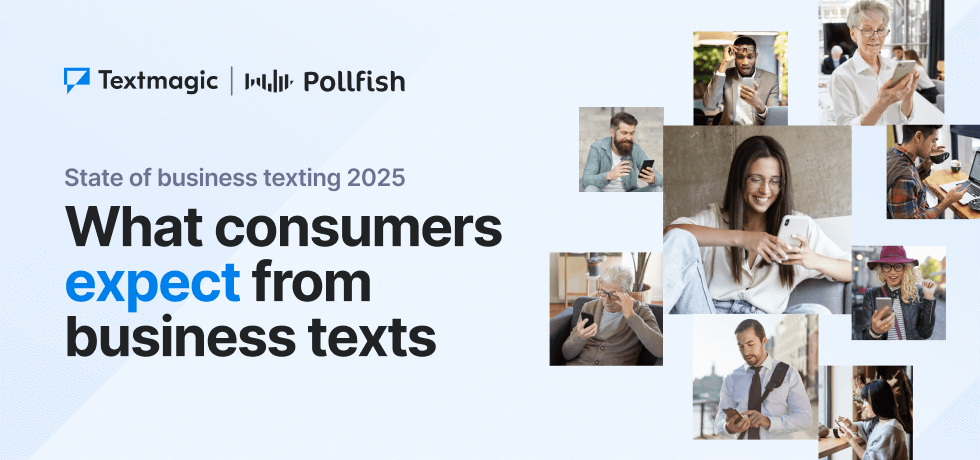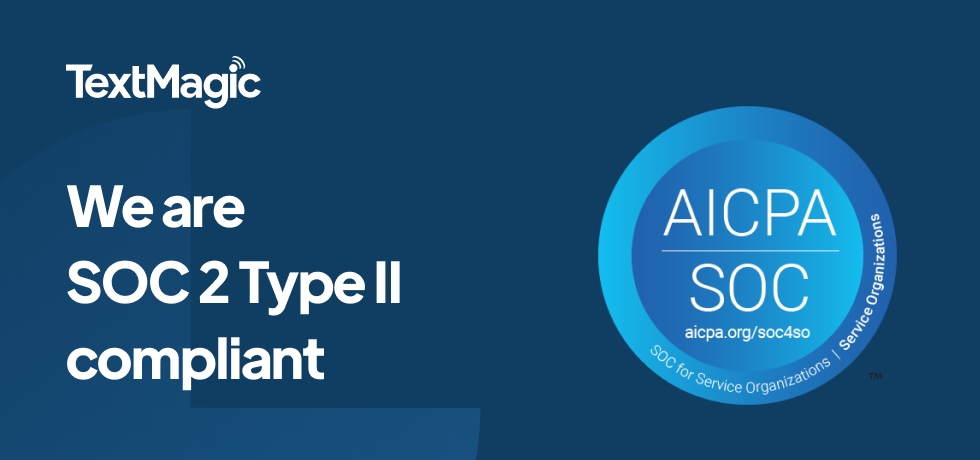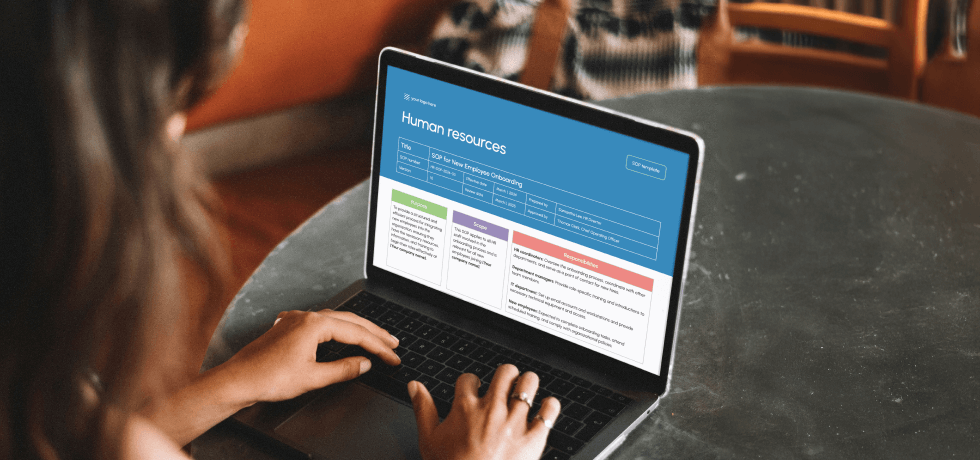
Our phones have become an integral part of our daily lives, always within reach. This constant accessibility makes us more likely to engage with text messages from the brands we trust. SMS marketing gives businesses a direct line to their target audience with less friction and more convenience.
In this blog, we’ll discuss the power of text message marketing. But there’s more. We’ll also touch on lead nurturing strategies to make your SMS campaigns more impactful and effective. Let’s dive in.
What is lead nurturing, and why is it important?
Lead nurturing is the process of cultivating relationships with potential customers throughout their journey to a purchase. Personalized communication lies at the core of lead nurturing to help guide leads down the sales funnel.
Here’s a quick overview of how it works:
- Through personalized communication, brands address specific pain points and offer tailored solutions. This helps build rapport and trust.
- Companies educate and inform prospects about their product or service, highlighting their value proposition and benefits.
- By regularly checking in with leads, companies keep them engaged throughout the sales cycle. They can tailor their messages based on where the lead is in the buyer journey.
Effective lead nurturing helps increase conversion rates by delivering timely and relevant content. This nudges prospects closer to making a purchase decision.
As a result, you can reduce marketing costs because you’re focusing resources on high-quality leads.
Lead-nurturing best practices
Below, you’ll find some effective strategies for nurturing leads down the funnel.
1. Use personalization
One of the most important aspects of lead nurturing within SMS marketing is personalizing your communications with your target audience.
Over 76% of customers say that personalized messages enhance their consideration of a brand.
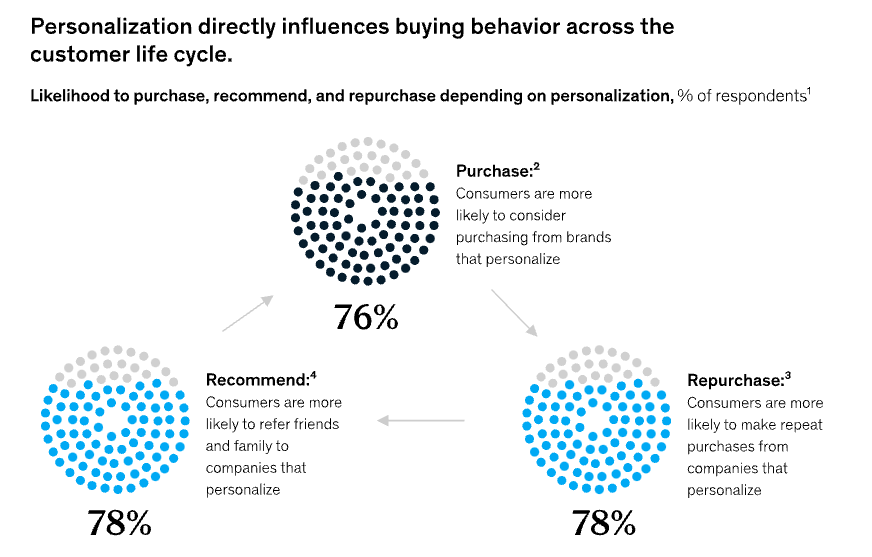
Image source: McKinsey.com
In contrast, 66% of consumers will end their purchase process if they encounter content that isn’t personalized.
By personalizing and tailoring experiences to your audience’s needs and interests, you’ll likely increase your click-through rates (CTR) and conversion rates.
Consider an online men’s clothing store launching a new tweed jacket collection. They can enhance engagement and drive conversions by infusing personalization elements into their SMS campaign.
For instance, incorporating the recipient’s name and tailored recommendations based on past purchases or browsing history can create a sense of exclusivity and relevance. Offering limited-time discounts or exclusive perks further incentivizes action.
A personalized SMS might read:
“Hi [First Name], Explore our exclusive Tweed Jacket Collection! Based on your style, we recommend [Jacket Model]. Enjoy a 15% discount with code TWJKT15. Shop now: [Link].”
Segmenting your audience can help you deliver more personalized messages. This step involves dividing your audience into different groups based on factors like:
- Demographics (e.g., age, location, gender, etc.)
- Motivations
- Pain points
- Interests
Suppose you want to segment your audience by location. But what if you could take things a step further by targeting them based on their real-time location using geo-targeting?
Let’s look at Cruise America, the RV rentals company. They understand their audience: adventure seekers who crave the freedom of the open road.
But how can they reach these customers when they’re already out exploring? Geo-targeted SMS marketing is the answer.
Imagine an RV traveler receiving a text message as they drive by a national park, offering a discount on nearby camping or suggesting a scenic detour. Talk about the right message at the right time.
Beaches of Normandy Tours also caters to various segments, from history buffs to veterans’ relatives. So, their marketing could also benefit from the incorporation of geo-targeting.
Imagine a history buff on the Band of Brothers tour receiving a phone notification as they approach a specific battlefield. It could prompt them to explore a virtual reality experience or listen to an audio guide detailing the events that unfolded there.
In short, personalization is the recipe for success in improving customer experience with your brand (regardless of industry).
2. Adopt a lead scoring system
Lead scoring is a strategy that helps businesses prioritize their leads based on their likelihood of making a purchase. As the name suggests, you just assign a numerical score to leads based on certain criteria like demographic data, behavior, and engagement metrics.
For example, consider an athletic shoe retailer. They may use a lead capture form on their website to find people who are likely to wear athletic shoes. This might include fitness enthusiasts, athletes, outdoor adventurers, etc.
The retailer might include a question in the form, asking why the athletic footwear interests the lead. People who answer for sports, outdoor activities, or workouts are likely to receive a higher score.
The brand can still consider leads who may be casual wearers but will likely focus on those who show a strong interest in activities that match the purpose and functionality of athletic footwear.
The retail brand might also score leads based on behavioral data, such as website visits, product page views, and interaction with content related to athletic footwear.
Another strategy is to monitor how these leads engage with marketing campaigns by looking at email open rates, CTRs, and responses to promotions.
So, what’s next after scoring leads? You can start personalizing and tailoring messages based on the scores you assign.
Take a look at what HOKA did with its SMS campaign. When new subscribers don’t convert after opting into its SMS campaign, the brand automatically sends a personalized follow-up message.
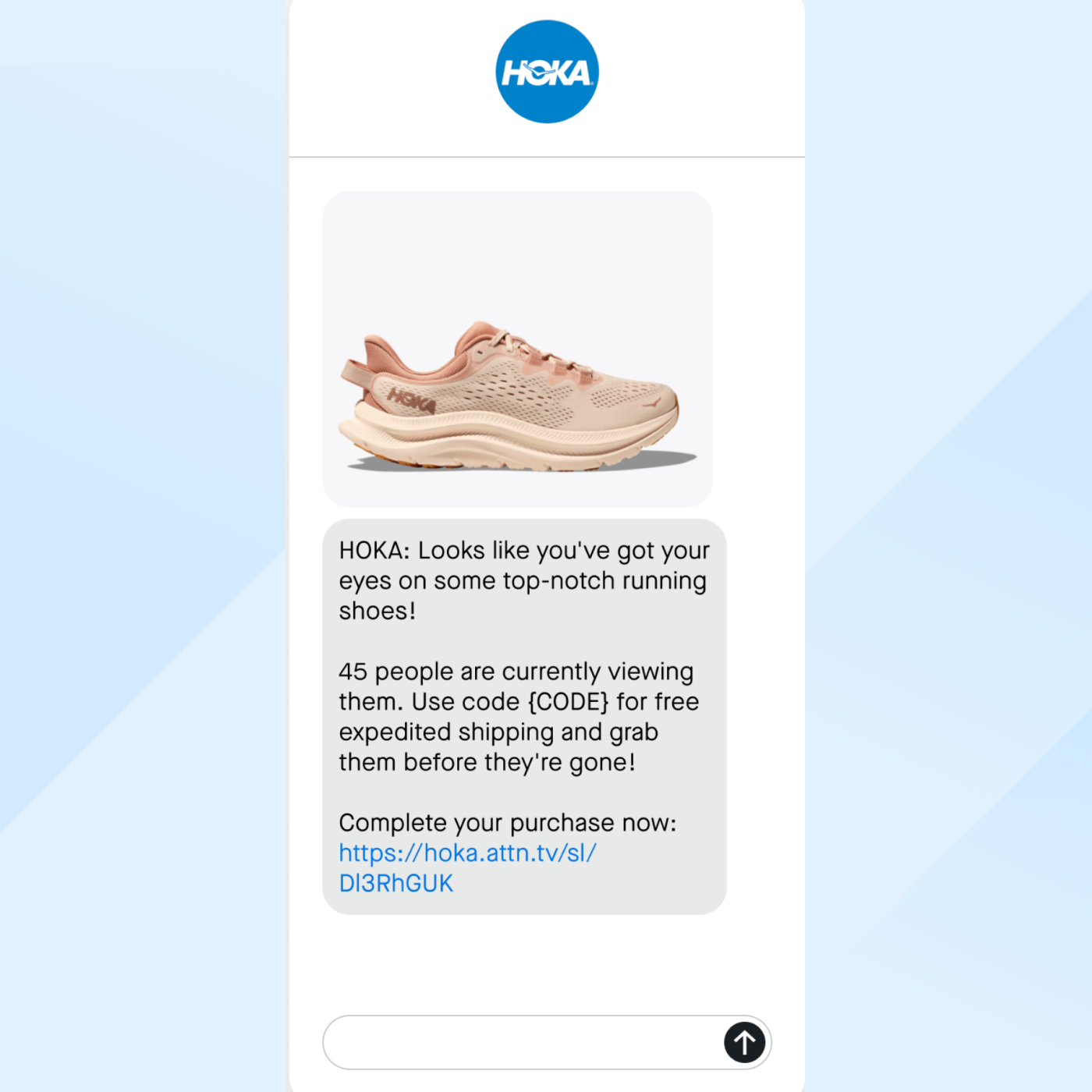
Image source: Attentive.com
3. Align marketing and sales teams
When you align your sales and marketing teams in lead nurturing, it provides a seamless way to engage and convert leads into customers.
For example, marketing generates leads, while sales follow up on them by qualifying and scoring them based on their readiness to make a purchase.
Aligning these efforts allows you to improve lead quality, shorten sales cycles, enhance the customer experience, and improve ROI.
4. Follow up with leads
Following up with leads allows you to maintain engagement, build relationships, and, ultimately, convert prospects into customers. Text is a phenomenal way to interact with your leads and customers. 66% of customers worldwide use text to engage with companies.
Strategies for effective follow-up include:
- Personalization: Tailor your follow-up communication to your leads’ specific needs and interests.
- Persistence: Follow up multiple times and space out your messages.
- Timeliness: Follow-up right after initial contact.
Here’s an example of an effective follow-up schedule for an SMS campaign:
- Day 1: Send an SMS thanking the lead for their interest.
- Day 3: If the lead doesn’t convert, follow up with a second SMS with a link to your product or service, like Hot Topic did.
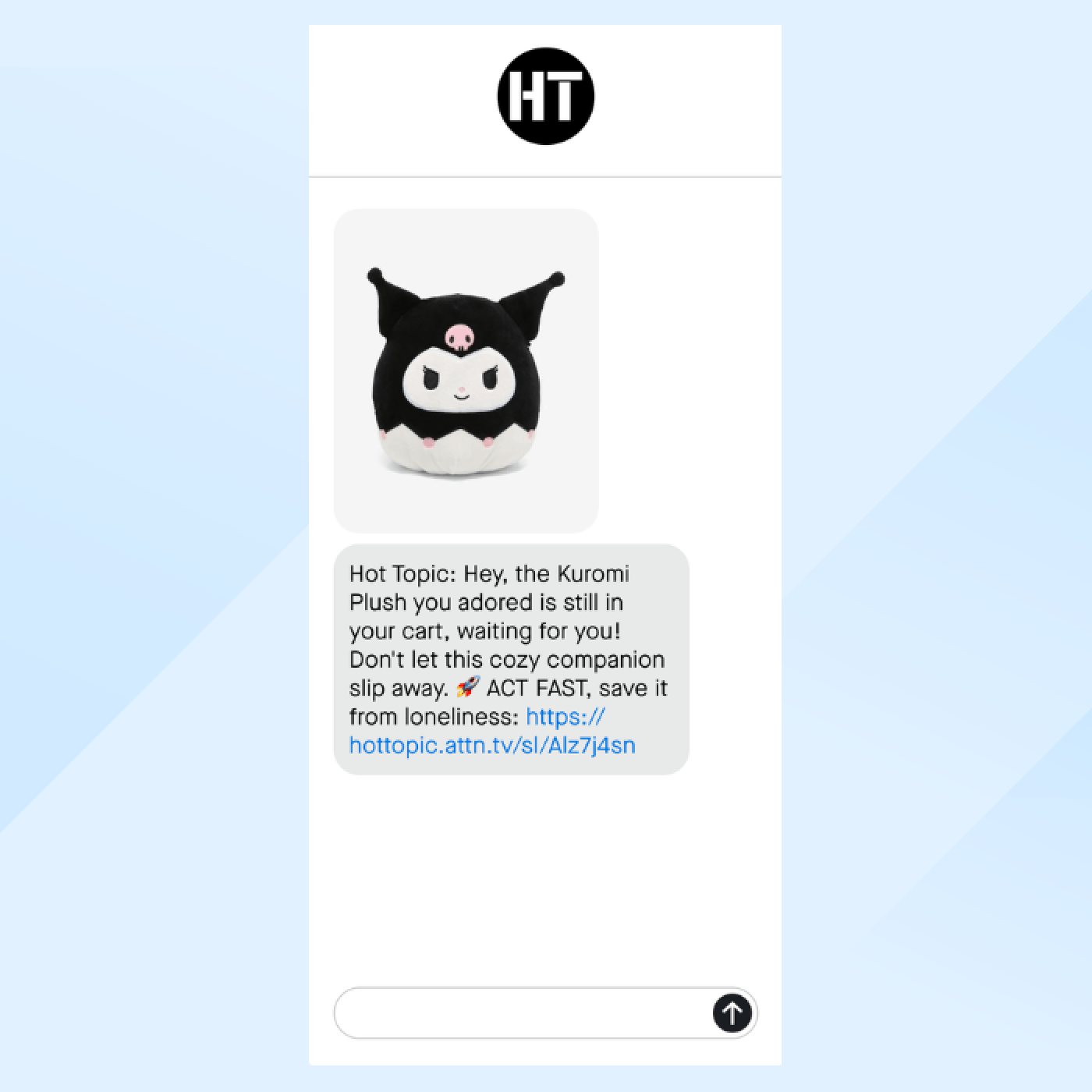
Image source: Attentive.com
- Day 7: If the lead still hasn’t converted, send a reminder highlighting a limited-time offer or promotion to create a sense of urgency.
- Day 10: Send a final follow-up SMS, reminding the lead that the promotion is ending soon and urging them to take action to get the offer.
Crafting a winning SMS lead nurturing campaign
Here’s how to create an effective SMS lead nurturing campaign.
Define your goals
Having clearly defined goals will provide a roadmap for your SMS marketing strategy. This will also help you measure your success.
Every campaign should relate to a larger, overall business goal.
Define your SMS campaign goals using the SMART criteria:
- Specific: Ex: Generate leads
- Measurable: Ex: Conversion rate
- Achievable: Ex: Clear CTAs, opt-in forms
- Relevant: Ex: Increase sales
- Time-bound: Ex: Increase leads by 30% in six months
Build your subscriber list
Consider these proven strategies for building your subscriber list for SMS marketing:
- Create engaging and exclusive content for SMS subscribers, such as sneak peeks, behind-the-scenes access, or early access to product launches.
- Offer gated content like ebooks, whitepapers, or special reports and discount codes or limited-time offers to those who opt in to receive SMS updates.
- Segment your audience by relevant criteria (e.g., demographics, interests, or purchasing behaviors).
- Launch a referral or loyalty program where existing subscribers can earn rewards or incentives for referring people and making purchases.
- Host contests or giveaways that require participants to opt-in via SMS.
- Simplify the signup process by implementing single-field forms.
- Include a clear, easily visible CTA to drive action.
Choose your SMS provider
Consider these key factors when choosing an SMS provider:
- Pricing: Consider the pricing structure of the SMS provider, including cost per message, monthly subscription fees, or additional charges for features or services.
- Customizability: Look for a provider that allows you to customize messages and sender IDs and incorporate branding elements.
- Flexibility. Consider scalability, integration with existing systems, and support for different campaigns or use cases.
- Reputation: Look at reviews, testimonials, and case studies for past and current customers.
- API documentation and integration: Look for providers with API documentation. They should also offer support resources to help you facilitate smooth integration with various applications and systems. For instance, Textmagic is an exceptional choice for SMS gateway APIs. This makes it easy to integrate SMS functionality into your existing systems and workflows.
Most importantly, make sure the provider complies with regulations, such as the Telephone Consumer Protection Act (TCPA) and the General Data Protection Regulation (GDPR).
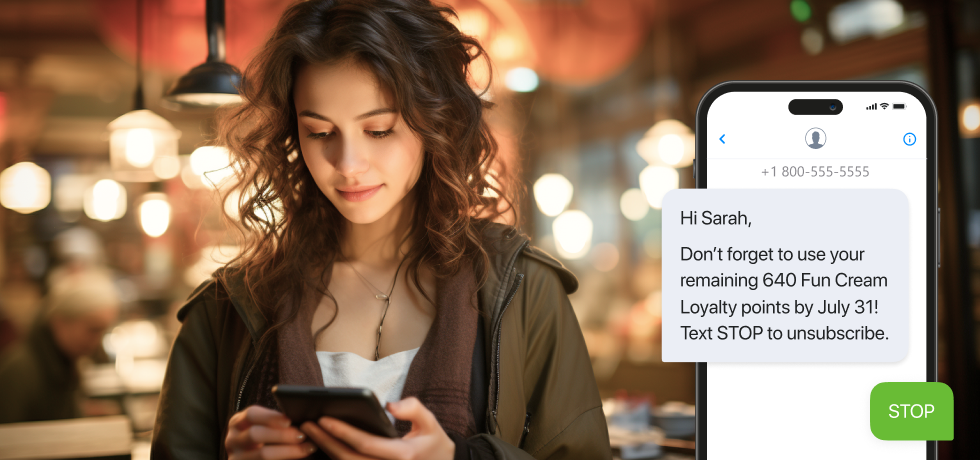
The legal landscape for SMS marketing depends not on the location where you’ve registered your organization but on where your customers live.
For example, if you incorporate your LLC in New York, but your target audience spans multiple states, your SMS strategy needs to account for the specific legal requirements of each state where your recipients reside.
This could mean adjusting the consent process or the way you provide opt-out options, ensuring your campaign remains compliant across jurisdictions. Keep this consideration in mind when choosing the right SMS provider to help stay out of legal hot water.
A New York-based LLC, for instance, must navigate New York’s regulations when messaging local customers but also adhere to the unique laws of any other state where its customers might be. The right SMS provider understands these legal requirements and can help you navigate them with ease.
Create your messages
SMS drip campaigns send a sequence of automated messages to subscribers at regular intervals. This strategy allows you to send relevant content at certain parts of the buyer’s journey.
Build SMS drip campaigns that personalize messaging, improve customer engagement, and drive repeat purchases.
Be sure to address customers by name and tailor content to their browsing behavior.
Here are some examples of SMS drip campaigns:
- Welcome series: Personalized welcome messages that go out to new subscribers to introduce the brand, highlight key products, and offer a specific discount or incentive for their first purchase.
- Abandoned cart recovery: Reminders that go out to customers who have abandoned their carts and urge them to purchase the items they left behind.
- Post-purchase follow-up: Messages that go out to customers after they make a purchase, thanking them for their order, providing order confirmation and shipping dates, and inviting them to leave a review.
- Engagement messages: A series of texts that go out to customers who haven’t purchased in a while and ask customers to leave reviews or fill out a survey, invite them to events, share content, wish them a happy birthday or anniversary, or provide exclusive offers or rewards.
Take a look at how Cozy Earth invites subscribers to engage by asking them about their New Year’s resolutions.
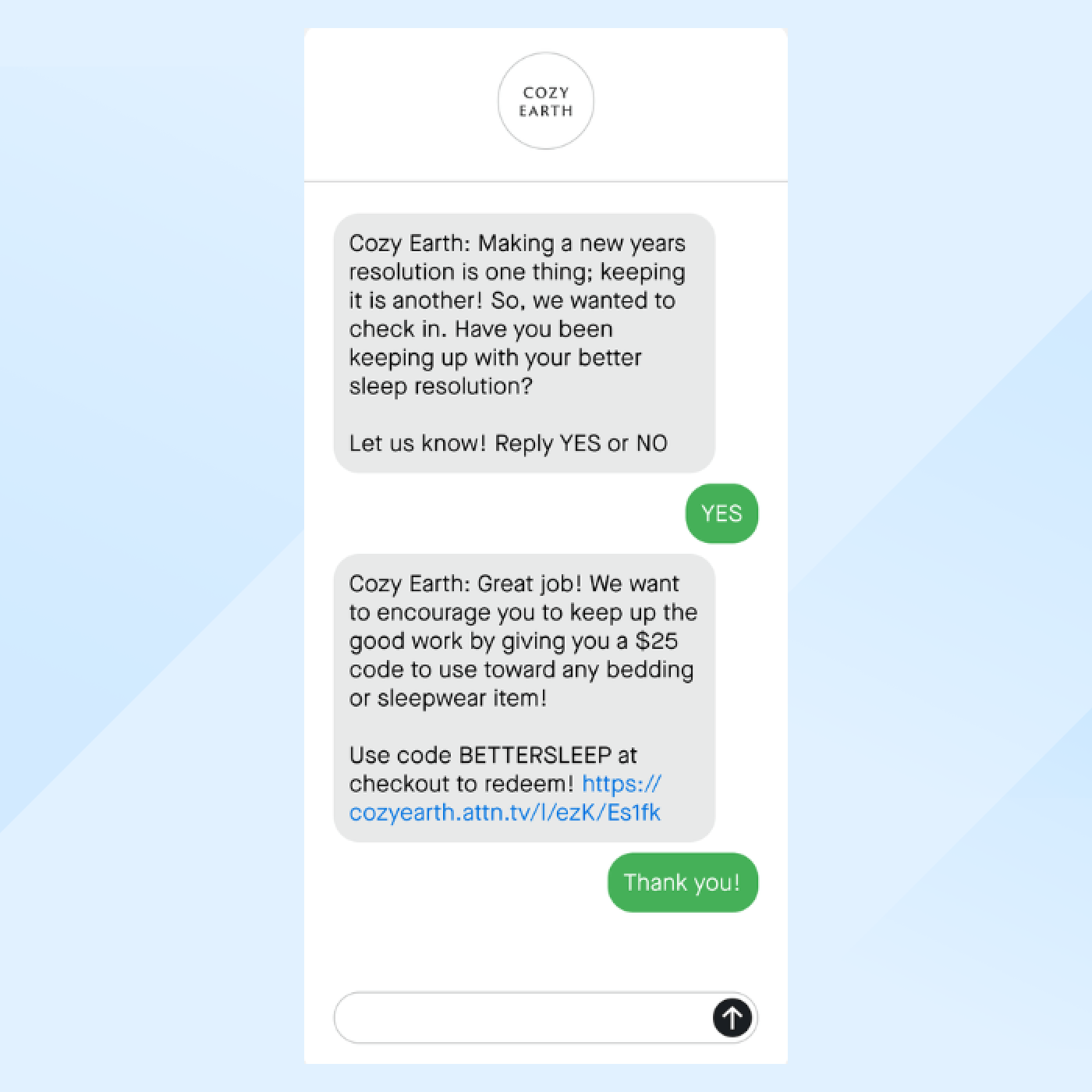
Image source: Attentive.com
Test, analyze, and optimize
Test, analyze, and optimize your lead-nurturing SMS campaigns to maximize success.
Use A/B testing to test different variations of SMS messages. This means you send out multiple messages with different elements like SMS copy, images, and CTA to see which ones perform the best.
Monitor metrics like open rates, CTRs, conversion rates, and progression through the funnel (i.e., lead-to-opportunity ratio, opportunity-to-customer ratio, and time-to-conversion). This analysis will help you identify bottlenecks and optimize the nurturing process.
Lean into success with Textmagic
Lead nurturing with SMS a process that takes time and effort. You must carefully nurture your leads throughout their customer journey.
Textmagic is the perfect solution.
Our automation, segmentation, and personalization capabilities help you engage your leads at every stage, leading to better customer relationships and higher conversion rates.
Get started today
Frequently Asked Questions (FAQs)
Lead nurturing is about staying in touch with potential customers by giving them helpful, relevant content (right when they need it), so they feel informed, supported, and ready to buy when the time is right.
Textmagic makes lead nurturing easy with automated texts, list management, and personalized messaging. You can set up keyword triggers to send instant replies, schedule follow-ups, and segment contacts into targeted lists. This ensures the right message reaches the right lead at the right time.
Nurturing can look like following up with a lead who downloaded a whitepaper by offering a free demo or inviting them to a webinar, ensuring continued engagement without a hard sell.
While Textmagic doesn’t offer a traditional drip campaign builder, you can create automated follow-ups using keyword triggers, scheduled messages, and integrations with 1,000+ apps via Zapier. This lets you build SMS workflows that nurture leads, send timely reminders, or follow up after key actions.
Lead nurturing builds trust with potential customers by providing relevant information throughout their buying journey. This approach increases conversion rates, shortens sales cycles, and enhances customer loyalty by keeping your brand top-of-mind.
In B2B, lead nurturing often involves longer sales cycles and focuses on educating multiple stakeholders through detailed content like whitepapers and webinars. In B2C, the process is typically faster and leverages personalized messages and timely offers to engage individual consumers.
Related articles
5 Simple steps to implement an effective closed feedback loop
Build a closed loop to improve your product with eve...
2025 survey: 53% of consumers didn’t get a reply after texting a business
Texting isn’t dead, but it’s not being used properly...
Great news: Textmagic is now SOC 2 type II certified
We are happy to announce that Textmagic has achieved...
Creating effective SOPs: 10 Templates and step-by-step writing guide
Standard operating procedures (SOPs) help ensure tha...
Welcome emails done right: 15 Templates for every occasion
In business, much like in personal encounters, the i...

